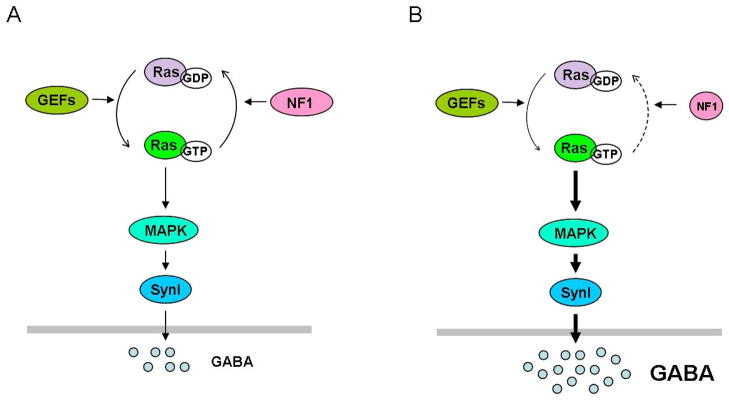Figure 3.
Proposed cellular mechanism underlying learning deficits of Nf1 mutant mice. (a) Learning triggers interneuronal Ras signaling leading to increased GABA release. MAPKdependent phosphorylation of synapsin I (SynI) plays a critical role in GABA release. Wild-type NF1 restricts the increase in GABA release within an appropriate range that modulates learning. (b) In Nf1 mutants, reduced NF1 activity leads to abnormal hyperactivation of Ras signaling in inhibitory interneurons during learning, resulting in abnormally high GABA release. This increased activity-dependent GABA release shifts the balance between excitatory and inhibitory processes in neuronetworks of the mutant mice and impairs synaptic plasticity needed for learning and memory.

